In order to prepare them for animal reduction prints next year, I wanted to expose my 4th grade artists to printmaking this year. This is another project from my sister, Amy Clay. She shared all of her art projects with me and I am extremely grateful to her for her help!
1. Learn about printmaking
If an artist doesn't have any experience with printmaking, it is helpful to see the process from beginning to end to have a better understanding of what each step involves and why it is necessary. We use this website from MoMA to get a brief introduction to printmaking.
2. Create 3 warm/cool colored background papers
Our city prints contained a warm colored side (representing the sunrise or sunset) and a cool colored side (representing the refection in the water). Each student received 3 sheets of 9 x 12 sulphite. Each of these papers were folded in half and painted with warm colors on one side and cool on the other. We created three papers because we will create 3 prints! The first print one pulls usually doesn't turn out so well. This gives us 3 chances to get at least one successful print.
3. Draw city on printmaking foam
To start this lesson off, we looked at a few interesting buildings in our world. I showed them out some buildings have clock towers, domes on the top, or diagonal lines. Each student received a 6 x 9 piece of printmaking foam. They wrote their name on the back with a sharpie, grabbed a pen, and drew 5-6 buildings on the foam. The buildings shared a vertical wall and I encouraged the students to use variety, one of our principles of art. Adding variety made our city much more interesting. They drew over each line twice to ensure the foam was adequately pressed down.
4. Print!
I modeled the process of using the brayer to apply ink to the foam, flipping the paper over and massaging to transfer the ink, peeling off just a corner to see if the ink transferred, and folding the paper quickly to get a reflection on the other side. Most students pulled at least 1 successful print! The most frequent problem is not applying enough ink. The trick is to listen for a "sticky" sound and make sure every spot on the foam is wet.
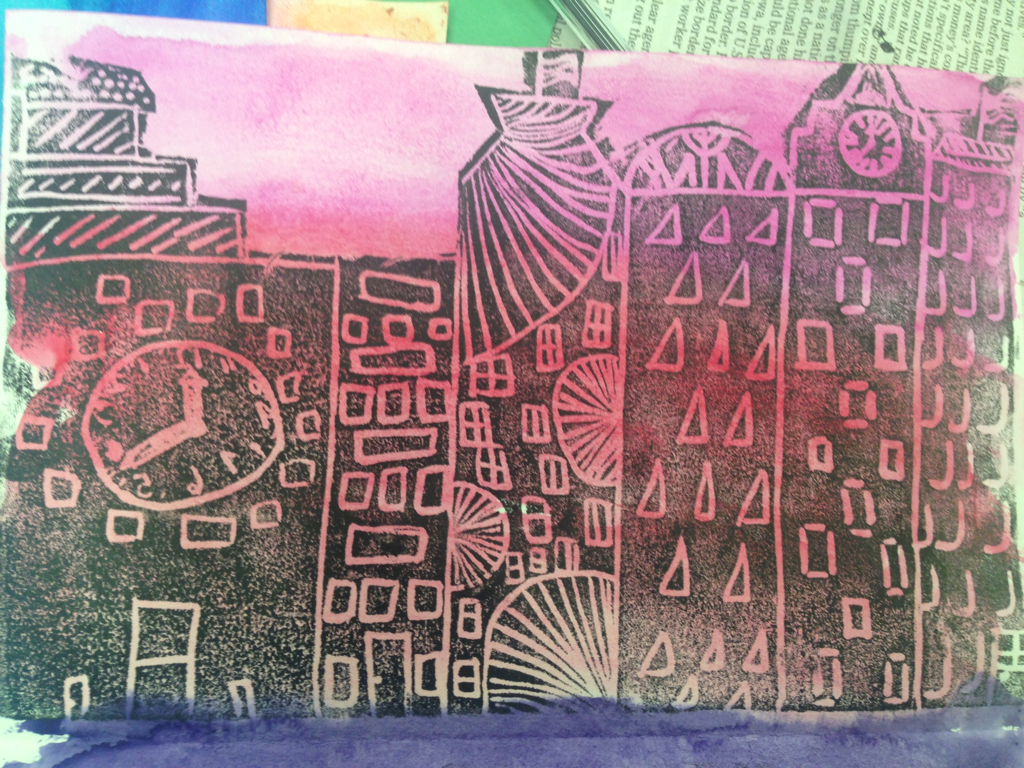


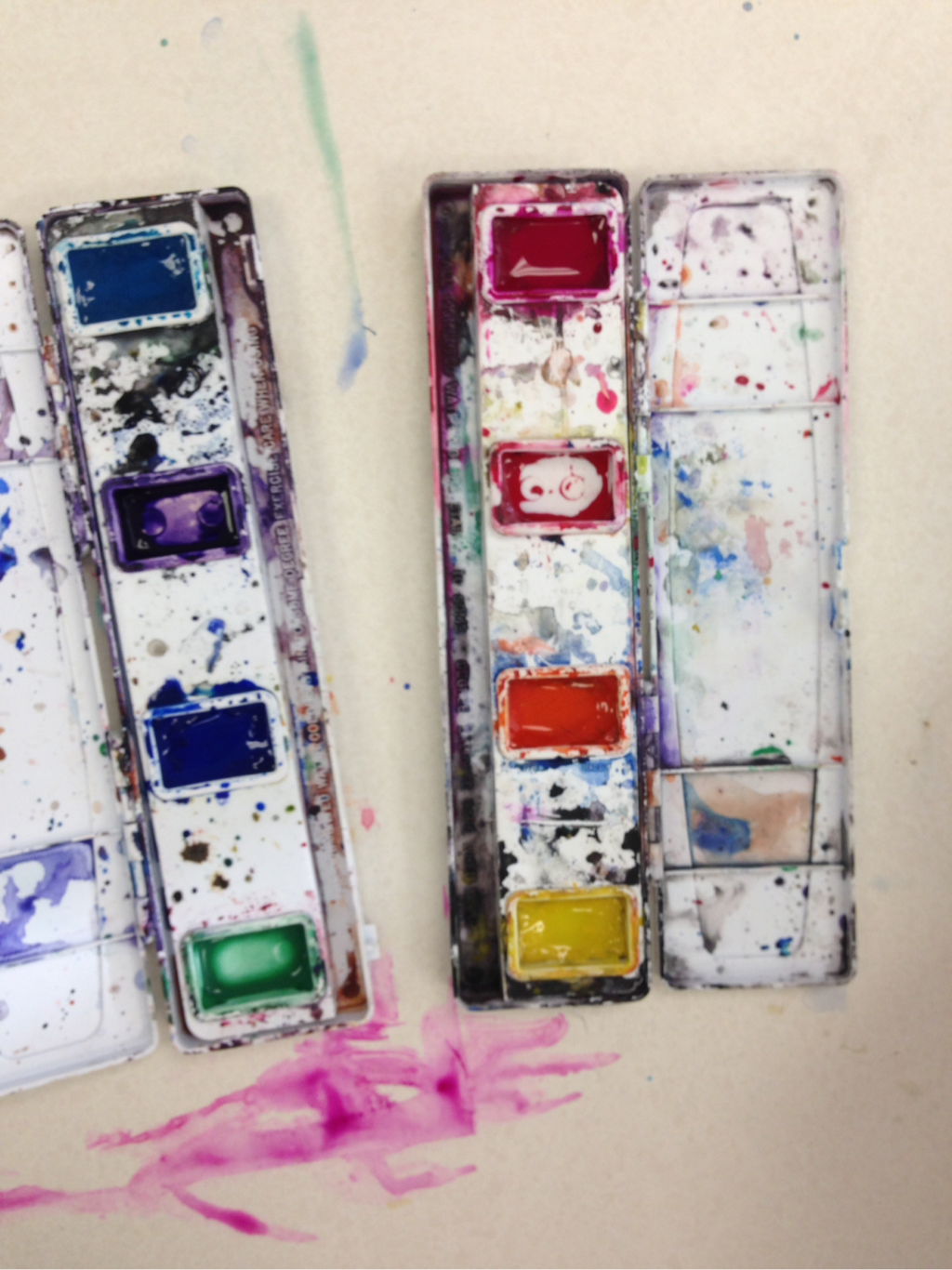
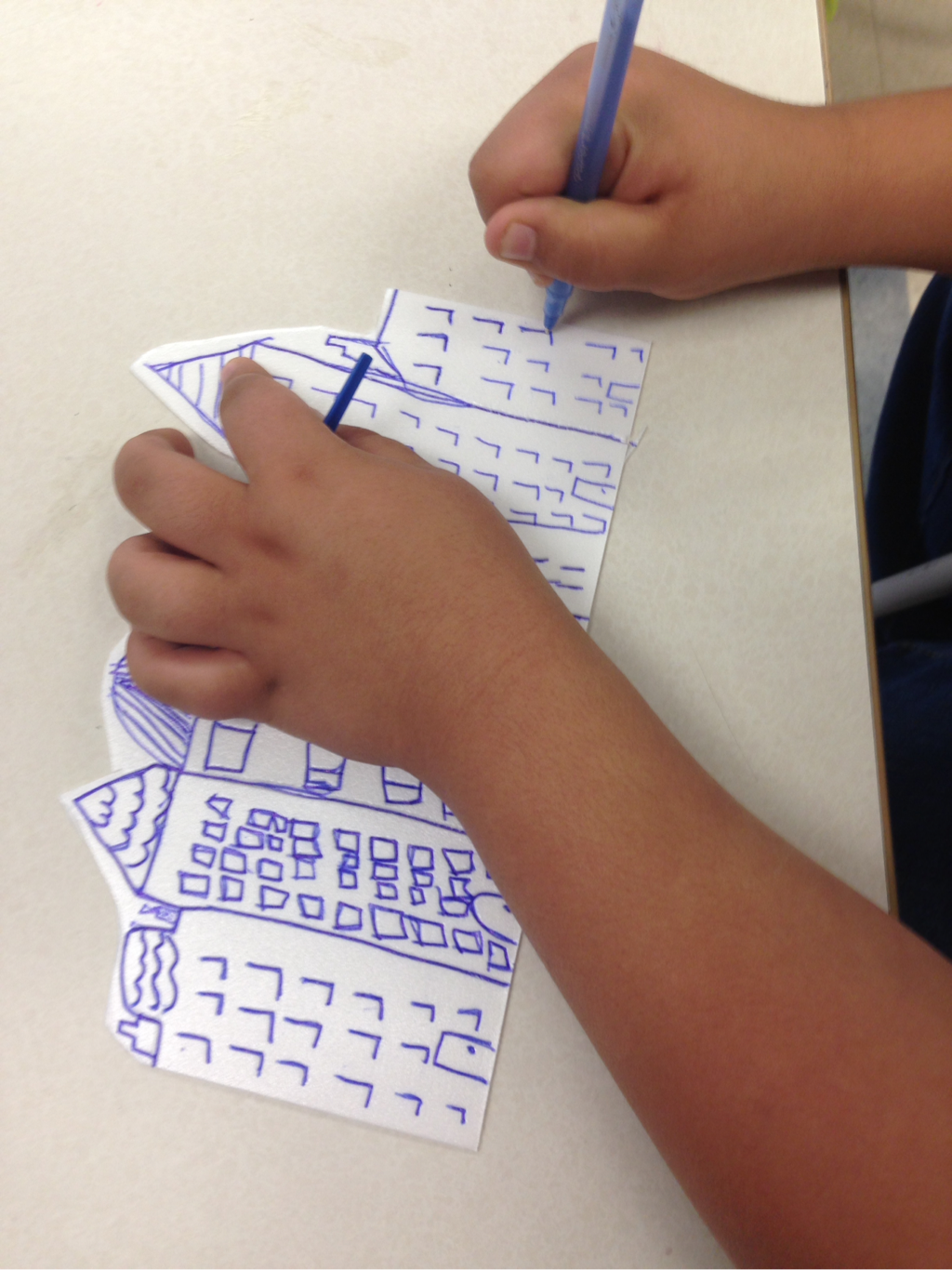
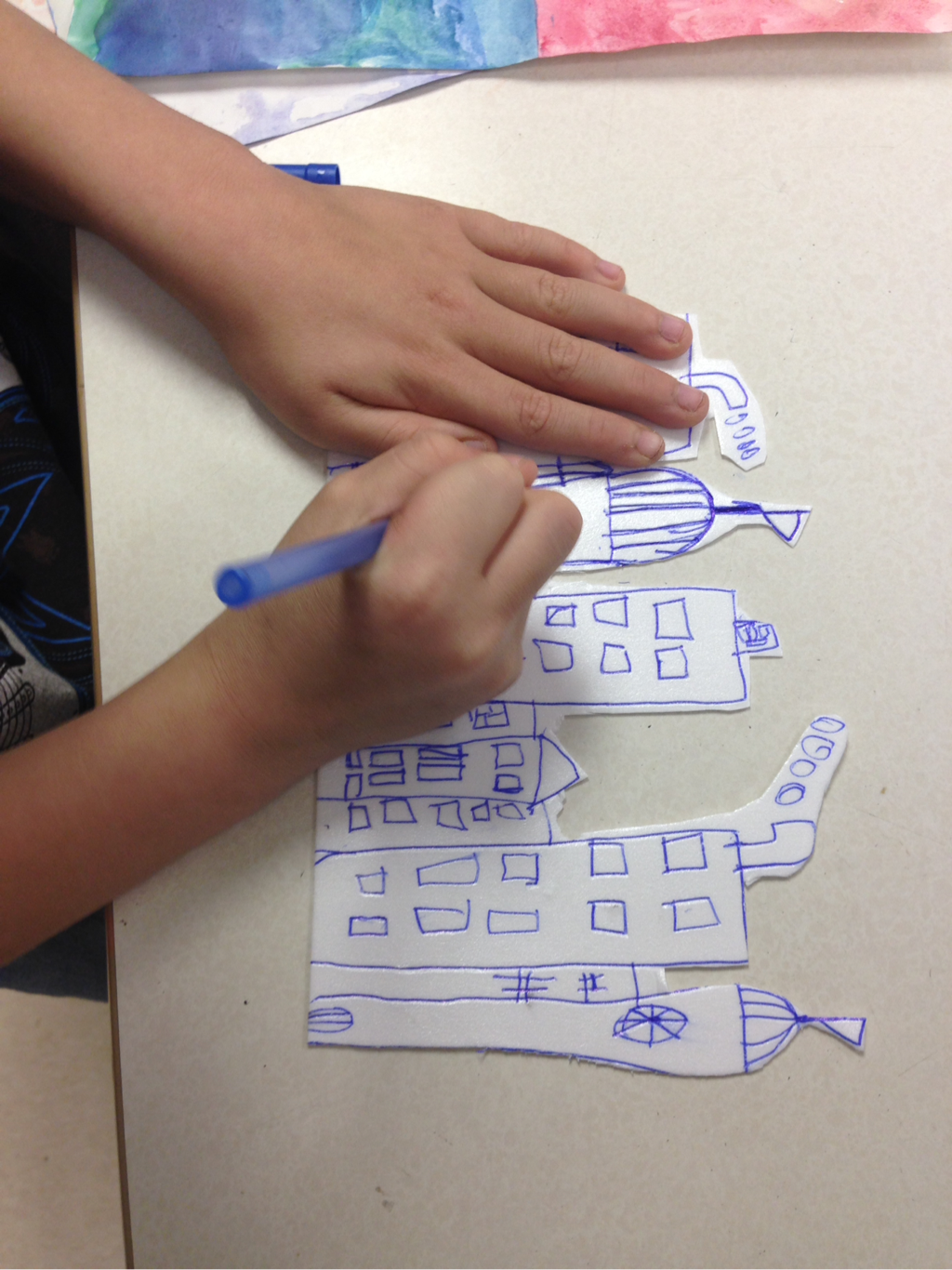
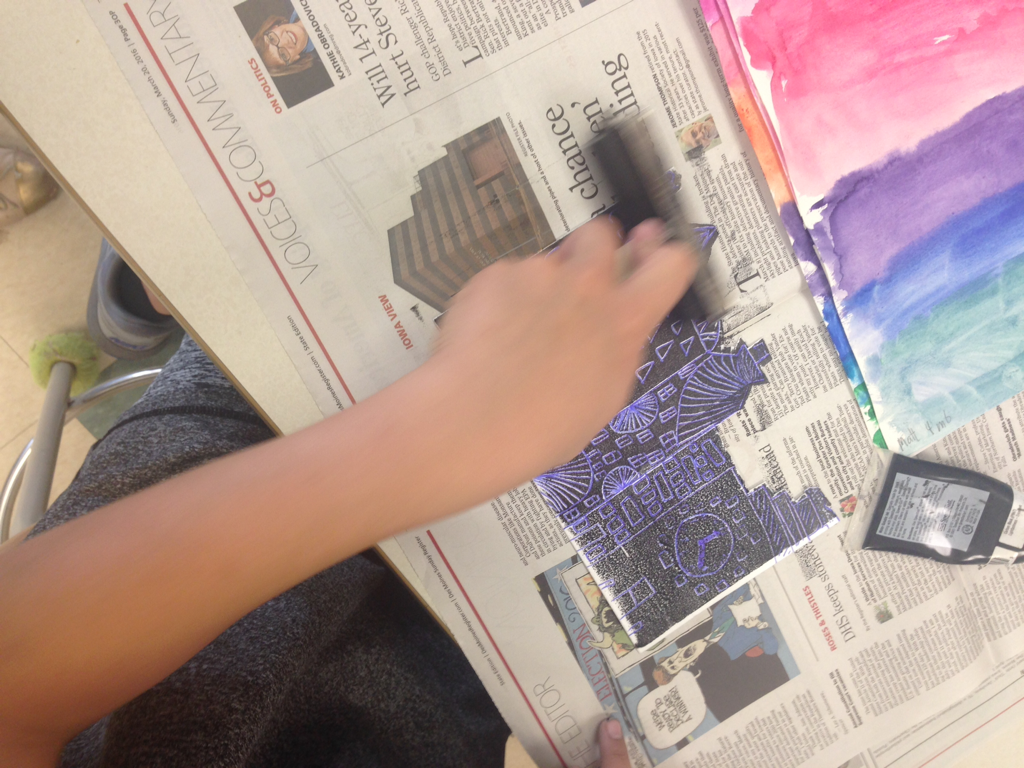



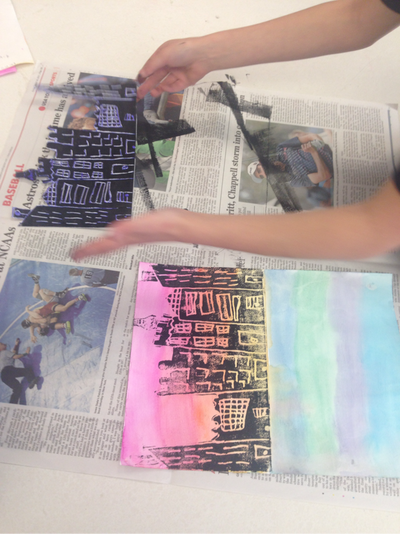
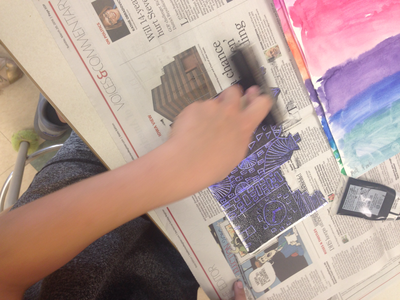


 RSS Feed
RSS Feed
